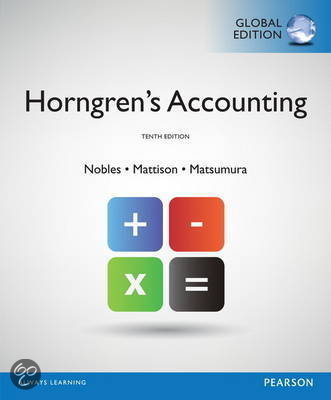Summary
Accounting Business Administration Radboud University: English summary of the book including figures/tables!
- Course
- Institution
- Book
An English summary of the subject ''Accounting'' of the study Business Administration at Radboud University Nijmegen. The book where all the information (including sources) comes from is ''Horngren's Accounting'' (10th edition, 2014) and is written by Nobles, Mattison and Matsumura. In the summary,...
[Show more]




